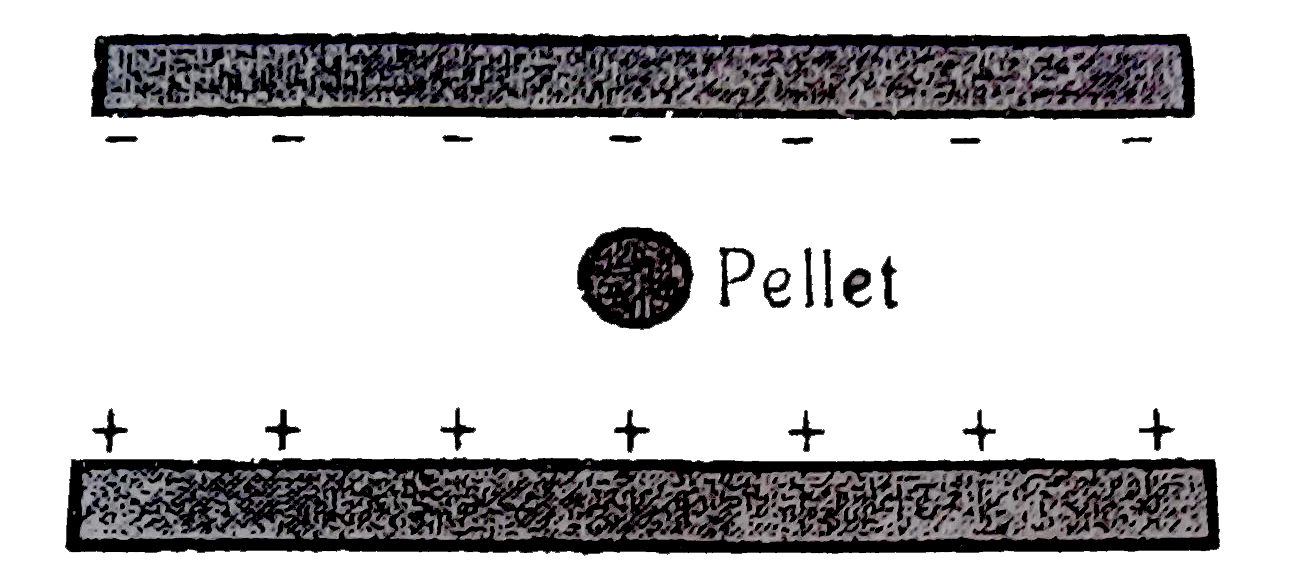An object is charged when it has a charge imbalance, which means the
object contains no protons
object contains no electrons
object contains equal number of electrons and protons
object contains unequal number of electrons and protons
The correct Answer is:D
To solve the question regarding the condition for an object to be charged, we can break it down into clear steps:
1. Understanding Charge Imbalance:
- An object is said to be charged when there is an imbalance between the number of protons (positively charged particles) and electrons (negatively charged particles) within it.
2. Identifying Charge States:
- If an object has an equal number of protons and electrons, it is electrically neutral. This means there is no charge imbalance.
- If the number of protons exceeds the number of electrons, the object becomes positively charged.
- Conversely, if the number of electrons exceeds the number of protons, the object becomes negatively charged.
3. Conclusion on Charge Imbalance:
- Therefore, the condition for charge imbalance is that the object must contain an unequal number of protons and electrons. This imbalance results in a net charge on the object.
4. Final Answer:
- The correct condition for an object to be charged is that it contains an unequal number of electrons and protons.
- An object is said to be charged when there is an imbalance between the number of protons (positively charged particles) and electrons (negatively charged particles) within it.
- If an object has an equal number of protons and electrons, it is electrically neutral. This means there is no charge imbalance.
- If the number of protons exceeds the number of electrons, the object becomes positively charged.
- Conversely, if the number of electrons exceeds the number of protons, the object becomes negatively charged.
- Therefore, the condition for charge imbalance is that the object must contain an unequal number of protons and electrons. This imbalance results in a net charge on the object.
- The correct condition for an object to be charged is that it contains an unequal number of electrons and protons.
Topper's Solved these Questions
- BOOK - NCERT FINGERTPS ENGLISHCHAPTER - ELECTRIC CHARGES AND FIELDSEXERCISE - ASSERTION & REASON15videos
ELECTRIC CHARGES AND FIELDS
- BOOK - NCERT FINGERTPS ENGLISHCHAPTER - ELECTRIC CHARGES AND FIELDSEXERCISE - Electric Charges5videos
ELECTRIC CHARGES AND FIELDS
- BOOK - NCERT FINGERTPS ENGLISHCHAPTER - DUAL NATURE OF RADIATION AND MATTER EXERCISE - Assertion And Reason15videos
DUAL NATURE OF RADIATION AND MATTER
- BOOK - NCERT FINGERTPS ENGLISHCHAPTER - ELECTROMAGNETIC INDUCTIONEXERCISE - NCERT Exemplar6videos
ELECTROMAGNETIC INDUCTION
Similar Questions
A point charge +Q is placed at the centroid of an equilateral triangle. When a second charge +Q is placed at a vertex of the triangle, the magnitude of the electrostatic force on the central charge is 8 N. The magnitude of the net force on the central charge when a third charge +Q is placed at another vertex of the triangle is
View SolutionTwo point charges, each of mass m and charge q are released when they are at a distance d from each other. What is the speed of each charged particle when they are at a distance 2r ?
View Solution
Knowledge Check
- Question 1 - Select One
Four point charges are labeled charge 1, charge 2, charge 3, and charge 4. it is known that charge 1 attracts charge 2. charge 2 repels charge 3, and charge 3 attracts charge 4. which of the following must be true?
ACharge 1 attracts charge 4Bcharge 2 attracts charge 3Ccharge 1 repels charge 3Dcharge 1 repel charge 4. - Question 2 - Select One
Assertion: Increasing the charge on the plates of a capacitor means increasing the capacitance.
Resion : Capacitance is directly proportinal to charge.AIf both assertion and reason are ture and reason is the correct explanation of assertion.BIf both assertin and reason are ture but reason is not the correct explanation of assertion .CIf assertion is true but reason is false.DIf both assertion and reason are false.
A positively charged body has :
View SolutionProve that if an isolated (isolated means no charges are near the sheet) large conducting sheet is given a charge, then the charge distributes equally on its two surfaces.
View SolutionA parallel plate capacitor is charged and the charging battery is then disconnected. If the plates of the capacitor are moved farther apart by means of insulating handles:
View SolutionA tiny charged pellet of mass m is suspended at rest by the electric field between two horizontal, charged metallic plates. The lower plate has a positive charge and the upper plate has a negative charge. Which statement in the answers here is/are true?
 View Solution
View SolutionAssertion : Spherical shell a in the shown figure has a charge −q and shell B has charge +q. When these two are connected by a thin conducting wire, then whole of the electrostatic potential energy stored between the shell is lost.
Reason : Whole of the inner charge will transfer to outer shell B.View SolutionTwo positive point charges of magnitude Q each are separated by a distance "2a". A test charge 'g0' is located in a plane which is normal to the line joining these charges and midway between them. The locus of the points in this plane for which the force on the test charge has a maximum value is
View Solution

